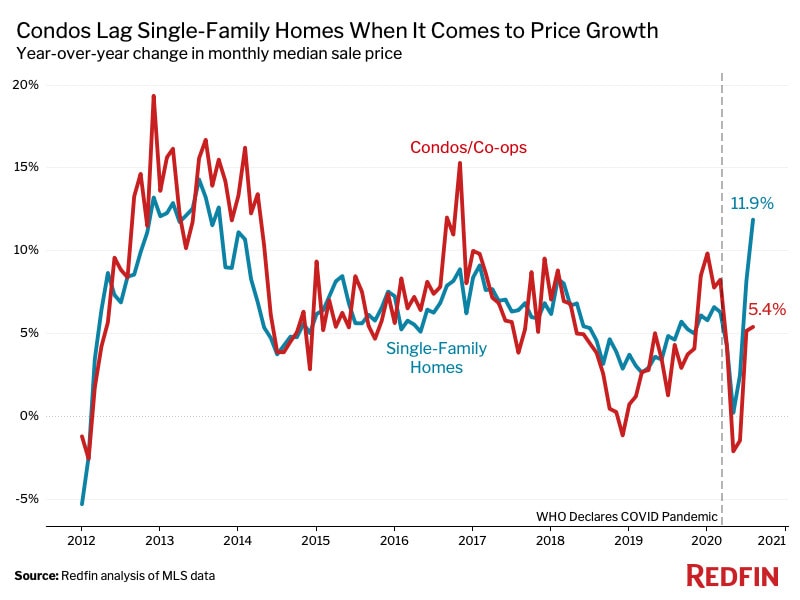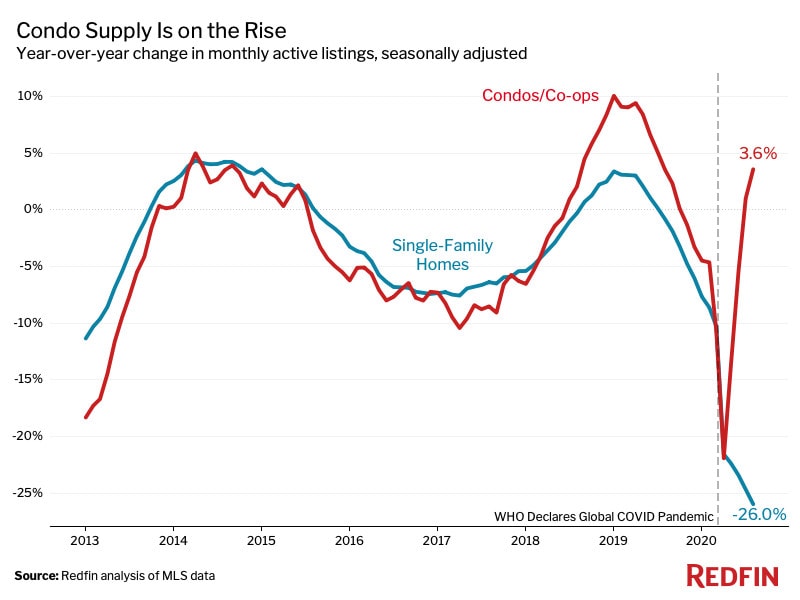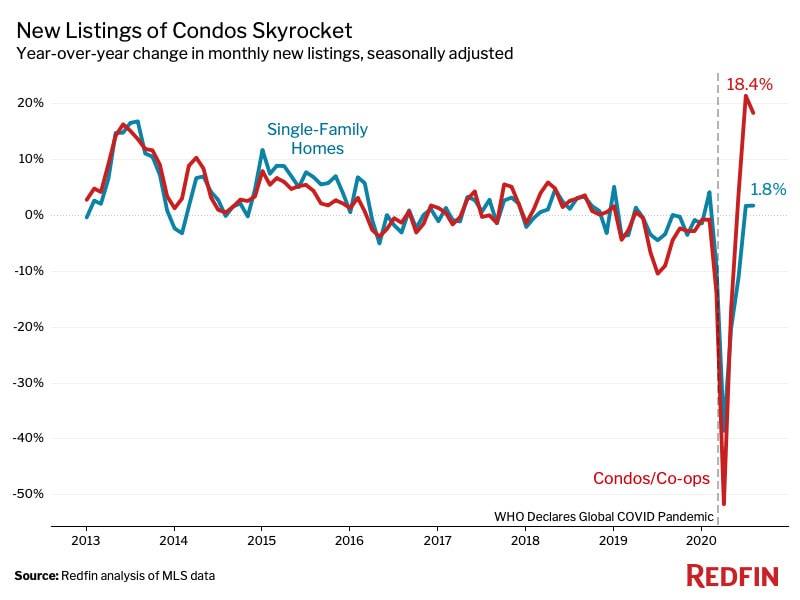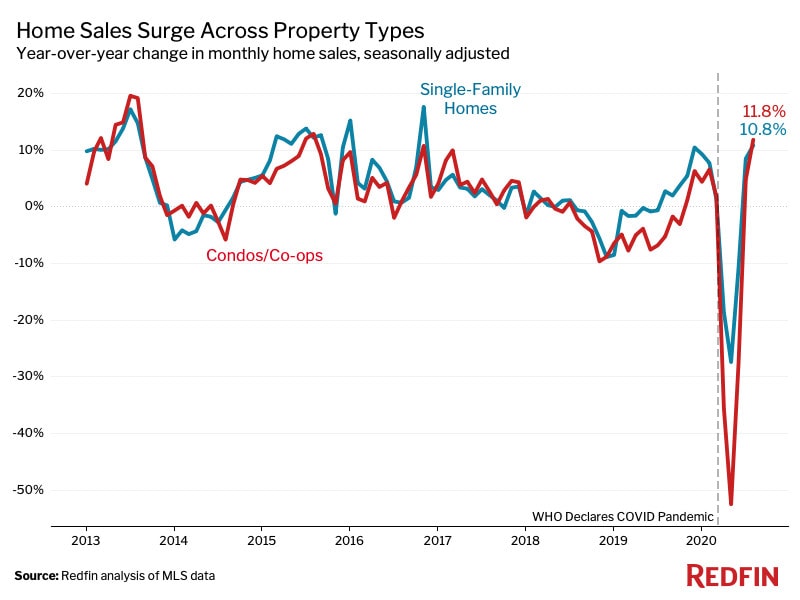Condo sale prices in the U.S. increased 5.4% year over year to a median of $266,000 in August, trailing growth in single-family home prices, which surged 11.9% to $343,000. That’s the largest price-growth gap between the two property types since 2014.

About one in five condos (21.9%) sold for above the price at which it was listed, up slightly from 19.2% in August 2019. That compares with one of every three single-family homes (33.6%), up from 24.3% a year earlier and the highest share on record.
“Home prices have been growing across all property types, as record-low mortgage rates have suddenly equipped Americans with more buying power. But condos have experienced relatively modest price growth because the coronavirus pandemic has motivated many homebuyers to instead bid on single-family homes, which typically offer more space and privacy,” said Redfin lead economist Taylor Marr. “But if prices of single-family homes continue to surge to unsustainable levels, condos may make a comeback, as they could become the only type of home that buyers in some areas can afford while also avoiding intense bidding wars.”
Interest in single-family homes has already started to decline slightly; about a third (34%) of saved searches created by Redfin.com users filtered exclusively for single-family homes in September, down from a peak of 37% in July, indicating that living in a single-family home is becoming less of a priority for house hunters.
Condos have seen relatively sluggish price growth, in part because they’re not as desirable among homebuyers during a pandemic, but also because the number of condos buyers have to choose from has been on the rise. The supply of condos for sale in the U.S. climbed 3.6% in August on a seasonally adjusted basis, while the number of single-family homes plummeted 26%.

New listings of condos surged 18.4% year over year in August on a seasonally adjusted basis, the second-consecutive month of double-digit gains. That compares with an increase of just 1.8% in new listings of single-family homes, explaining the large gap in supply growth between the two property types in the chart above.

“Many Americans are putting their condos up for sale because they’re realizing that owning a single-family home is now possible for the first time, thanks to record-low mortgage rates and remote work,” Marr said. “Landlords have also been selling condos that they previously rented out because the rental market has been showing signs of weakness due to the coronavirus.”
Condo sales climbed 11.8% in August on a seasonally adjusted basis, outpacing the 10.8% increase in sales of single-family homes and surpassing the pre-coronavirus (February) growth rate for the first time. One might expect to see stronger home sales in the single-family market given robust homebuyer demand, but the supply shortage has put a lid on how far single-family home sales can grow, according to Marr.

The typical condo was on the market for 36 days before going under contract in August, four days faster than a year earlier. Still, that trails the pace of the typical single-family home, which spent just 30 days on the market before going under contract—nine days faster than the prior year.
Nationwide, 40% condos went off the market within two weeks in August, up from 33.3% a year earlier. But single-family homes saw much higher growth, with 50.1% of properties going off the market within two weeks, up from 35.2% in August 2019.
These measures indicate that condos aren’t attracting as much competition as single-family homes; just 41.3% of condos faced bidding wars in August, compared with 56.6% of single-family homes.
“There’s high inventory, not much competition, and minimal buyer demand for condos right now,” said Seattle Redfin real estate agent Jessie Culbert Boucher. “Sellers are getting more flexible in terms of prices and realistic expectations, but it can take them a number of months to be willing to let things go for lower than they expected.”
To be included in the metro-level section, metro areas must have a population of at least 1.5 million and at least 100 condo sales in august. The New York metro area was excluded from this analysis due to limited data availability.
Below are market-by-market breakdowns for prices, supply, new listings and sales for markets with at least 100 condo sales in August. For downloadable data on all of the markets Redfin tracks, visit the Redfin Data Center.


